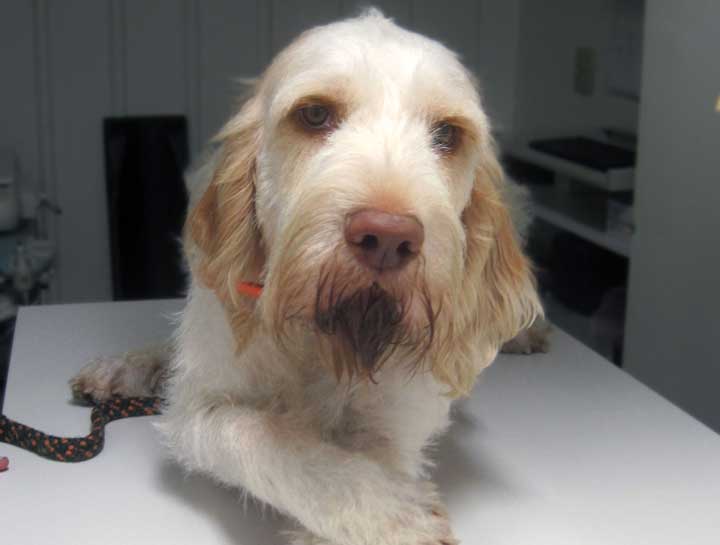Precise Positioning Technique™
Get an accurate evaluation.
More than 40 years of experience doing hip radiographs has revealed many valuable things, the most important of these being that precise positioning is absolutely crucial to getting an accurate evaluation.
As Dr. Davis began to do more and more X-rays, he also began to see more and more films done by other veterinarians which were brought to him by owners/handlers who didn’t feel the official grade their dog had received was a true reflection of the animal’s hip conformation. The more he spoke with these owners/handlers and the more X-rays he reviewed, the more a particular trend began to emerge.
Many of the reports issued to these owners with failing grades listed subluxation (either one-sided or two) as the only radiographic finding. Dr. Davis had realized long ago that imprecise positioning could often cause a non-dysplastic dog to look dysplastic. A tilted pelvis, patellas rotated outwardly, or femurs that were not parallel to one another can sometimes drastically change the appearance of the hip joint.
He then began to notice that once he had taken the x-rays and positioned them according to published standards of both the O.F.A. and the veterinary community, these dogs began receiving passing grades.
For years Dr. Davis knew that his theory made perfect radiographic sense: accurate assessments about the formation and structure of the hip joints cannot be made without accurate positioning reflecting the true anatomical state of the hips. The problem was, he didn’t have any proof to back that up. That is until he finally decided to conduct his own small study.
The study began with contacting owners of dogs who had come to Dr. Davis to have hip radiographs done after they had been performed elsewhere and submitted to the O.F.A. This survey sample of 105 dogs was taken from patients/clients seen at Troy Animal Hospital between January 2003 and May 2009. Of the 105 surveys sent, 53 responses were returned. Among those 53 responses, 27 of the dogs had received failing grades with subluxation (either unilateral or bilateral) being the only radiographic finding. 25 of those dogs went on to pass their OFA evaluation using the Precise Positioning Technigue™.
Recently, Dr.Davis concluded a 4-year study of 163 dogs previously failing the OFA evaluation,104 passed when using his Precise Positioning Technique™ receiving Fair, Good, or Excellent OFA Hip Grades.
As positional subluxation can often give the appearance of dysplasia, this is the group Dr. Davis focused on for the core of his study. To read the full study about the variation in O.F.A. grades in dogs with unilateral or bilateral coxofemoral subluxation only, click here. For an easy-to-read summary of his findings, click here.
View Dr. Davis' Hip Xray Website
